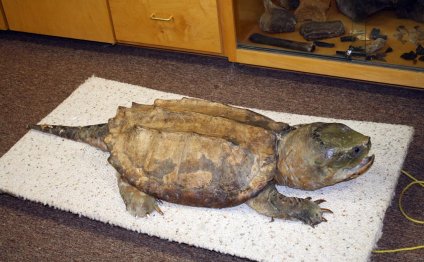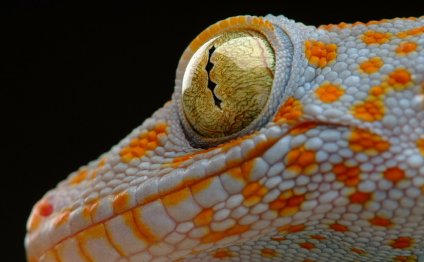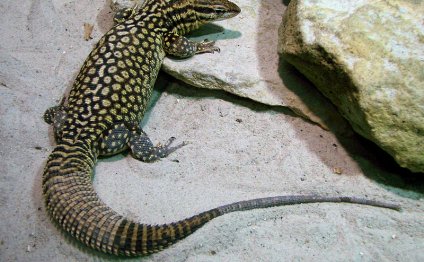
Types of Reptiles

| Turtles |
Western Painted Turtles need marshy ponds, small lakes, slow-moving streams and quiet off-channel portions of rivers. They prefer waters with muddy bottoms with aquatic vegetation. Open ground for nesting and logs for basking help keep this species healthy. These painted turtles occur in the Blue Mountains and Willamette Valley ecoregions. In the Columbia Plateau, East Cascades and West Cascades ecoregions, they live only along the Columbia River. |
Western Pond Turtle
Pond Turtles prefer marshes, streams, rivers, ponds and lakes. They need sparse vegetation nearby for digging nests and like to bask on logs. They can be found in the Coast Range, East Cascades, Klamath Mountains, West Cascades and Willamette Valley ecoregions. Population declines are due to habitat loss, degradation of nesting areas by invasive plants, competition from non-native turtles and disease. Predators include raccoons and invasive bullfrogs and fish. |
Sea Turtles |
Loggerhead Sea Turtle
|
Green Sea Turtle
|
Leatherback Turtle
Leatherback Turtle Dermochelys coriacea Proposed critical habitat for this endangered species includes Oregon waters. |
 Lizards Lizards |
Lizards are more like ancient reptiles than either snakes or turtles. There are more than 2, 500 species of lizards known in the world and they range from legless, snake-like varieties to the better known, four legged type with five toes on each foot and scaly skin. Most lizards lay eggs but some give birth to live young. Most eat insects and small animals; some eat plants. Many lizards are very fast and most can swim. Some can even "swim" through the sand just below the surface. Lizards don't like to be caught and several species will take some pretty drastic steps to get away... like letting their tails break off! Should one of these lizards be caught from behind, its tail will separate from the body, leaving the predator holding a tail that seems to have a life of its own, slapping and wrapping itself all around. With luck, the sacrificial tail will keep the predator occupied just long enough to let the lizard get away, and begin to grow a new tail. Many lizards can let their tails break off numerous times and they will just grow back. In fact, some lizards have been known to break off their own tails and eat them when food was scarce. It's a lizard's sack lunch. Oregon has a variety of lizards within its borders. Everything from the wide-spread swifts or fence lizards to alligator lizards (which have a personality to match their name) to the dinosaur like horned lizards, sometimes called horny toads, of southeastern Oregon. But the most common lizard in Oregon is the skink. Skinks can be recognized by their smooth, glossy scales. |
Northern Alligator Lizard
Northern Alligator Lizard Elagaria coerulea This lizard prefers humid areas, such as the edges of meadows in coniferous forests, and is also found in riparian zones. This is the only lizard found in the cool coastal forests of northern Oregon. The Northern Alligator Lizard eats small invertebrates (termites, beetles, ticks, spiders, millipedes, and snails), and occasionally takes small birds, mammals, and other lizards. |
Southern Alligator Lizard
Southern Alligator Lizard Elgaria multicarinata The Southern Alligator lizard is found in a variety of habitats from grassland and chaparral to oak woodlands and edges of open coniferous forests, as well as riparian zones and moist canyon bottoms. It requires thickets, brush heaps, downed logs, or rock piles for cover. This carnivorous lizard feeds primarily on small invertebrates (slugs, spiders, centipedes, scorpions, beetles, grasshoppers, and crickets), but also is known to feed on bird eggs, nestlings, other lizards, and small mammals. |

Mojave Black-collared Lizard
Mojave Black-collared Lizard Crotaphytus bicinctores This lizard is found in a variety of desert shrub vegetation types, but is most dependent on the presence of rock outcrops, boulders, or talus slopes. The Mojave Black-collared Lizard is an aggressive carnivore that eats a variety of other reptiles and large insects, such as crickets and grasshoppers, as well as some plant material. |
Long-nosed Leopard Lizard
Long-nosed Leopard Lizard Gambelia wislizenii These lizards are found in open desert shrublands, particularly where islands of sand have accumulated around shrubs, and are absent where a dense grass understory would inhibit their ability to run. The Longnose Leopard Lizard eats large insects, such as grasshoppers, crickets, and beetles, and also takes small vertebrates, including pocket mice, side-blotched lizards, whiptails, and fence lizards. Some plant material (flowers, berries) is eaten when available. |
Pygmy Short-horned Lizard
Pygmy Short-horned Lizard Phrynosoma douglasii The Short-horned Lizard occurs in sagebrush deserts, juniper woodlands, and open coniferous forests. It prefers open areas with sandy soils, but is also found on rocky soil. Ants make up a large part of the diet, but beetles, caterpillars, spiders, and sowbugs are also eaten. This lizard burrows into the soil when inactive. |
Desert Horned Lizard
Desert Horned Lizard Phrynosoma platyrhinos The Desert Horned Lizard is found in flat or gently rolling deserts covered with sagebrush or salt-desert shrub. It prefers areas with scattered bushes and loose, sandy soil, but sometimes occurs in rocky areas or on hardpan. Primary foods are ants and beetles. It also feeds on insect larvae, spiders, crickets, flies, and small grasshoppers. |
Sagebrush Lizard
Sagebrush Lizard Sceloporus graciosus As their common name implies, these lizards are found in sagebrush habitats, but also occur in chaparral, juniper woodlands, and coniferous forests. They require well-illuminated open ground near cover and are primarily ground dwellers. They eat a variety of small invertebrates, including crickets, beetles, flies, ants, wasps, bees, mites, ticks, and spiders. |
Western Fence Lizard
Western Fence Lizard Sceloporus occidentalis The Western Fence Lizard occupies a wide range of habitats, from desert canyons and grasslands to coniferous forests. It requires vertical structure in its habitat, such as rock piles of logs. It is absent from dense, humid forests and flat desert valleys. This lizard is insectivorous, and feeds on crickets, grasshoppers, beetles, ants, wasps, leafhoppers, and aphids. Some spiders are taken as well. |
Side-blotched Lizard
Side-blotched Lizard Uta stansburiana The sie-blotched lizard is found in sagebrush, juniper, and shadscale habitats. It is often found on sandy bottoms of washes or canyons, especially in the presence of scattered rocks. This small lizard feed mostly on smaller invertebrates such as spiders, mites, ticks, sowbugs, beetles, flies, ants, and small grasshoppers. |
Western skink Western Skink Eumeces skiltonianus The Western Skink is found in moist places, such as under rocks or logs, in a variety of habitats from grassland and chaparral to desert scrub, juniper woodlands, and coniferous woodlands and forests. Rocky areas with some moisture, such as riparian zones, are favored. This skink feeds on a wide variety of invertebrates, including beetles, grasshoppers, moths, flies, spiders, and earthworms. |
Western Whiptail
Western Whiptail Cnemidophorus tigris The Western Whiptail is fond in eastern Oregon deserts and semiarid shrublands. It is most common in flat, sandy areas and along dry washes. These Lizards are primarily insectivorous. In a food habits study in southeastern Oregon, they ate caterpillars, crickets, grasshoppers, and beetles. They also eat spiders, scorpions, and other lizards. |
   
Source: www.dfw.state.or.us
RELATED VIDEO English Vocabulary : Types of Animals
 Google Pictures of Reptiles
 What Type of Snake is This?
Share this PostRelated postsColorful lizardAPRIL 21, 2025
A very large species of chameleon that is endemic to forests in eastern and northern Madagascar. They reach up to 68 cm (27… Read MoreTypes of Reptiles as petsAPRIL 21, 2025
Cozmo - Bearded Dragon. Jordan Continued from page 1 Updated . Lizards As a basic rule, only certain lizards are good for… Read More |












